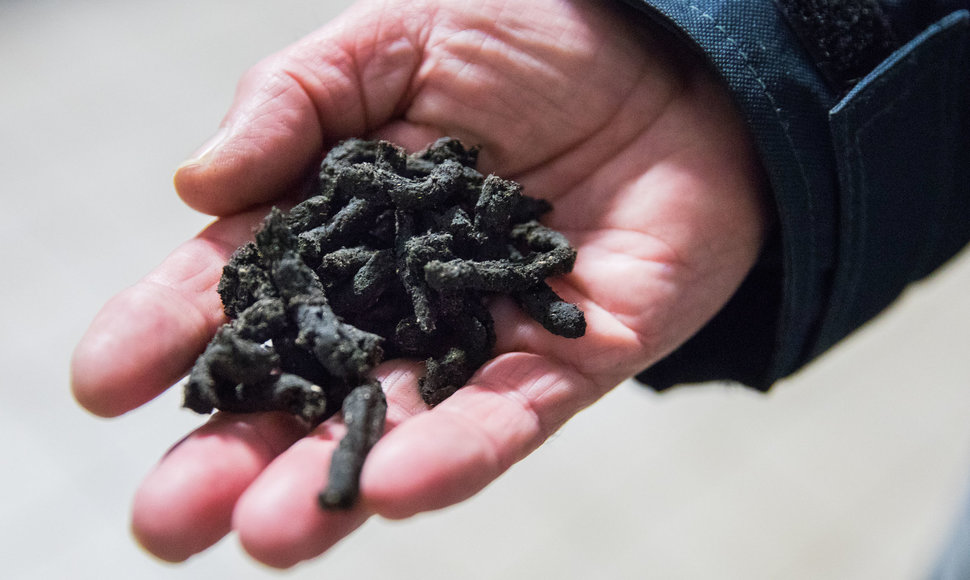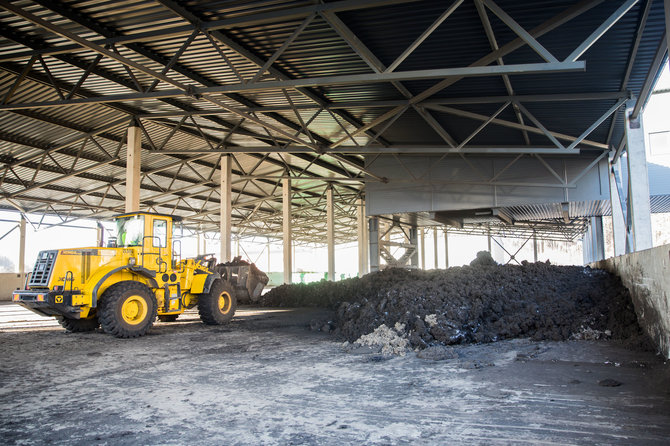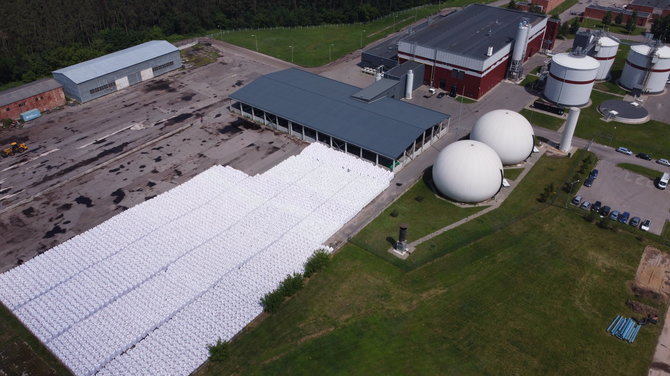During this half-year, the company has accumulated and dried nearly three thousand tons of sludge, part of which has already reached energy crops. Vilniaus Vandenys is one of the few water treatment companies in the country that does not burn dried sludge, but uses it to fertilise energy crops, thus contributing to sustainable environmentally friendly solutions by reducing greenhouse gas emissions.
Vilnius wastewater treatment plant, the largest one in Lithuania, generates about 20 to 25% of the country’s sewage sludge that produces approx. Thirty thousand tons of dried sludge and about 9 thousand tons of dry matter once the final drying of the waste is completed using special equipment. Although sewage sludge is already used for electricity generation during its treatment, most of the waste generated must be properly disposed of. Often, wastewater treatment companies simply incinerate it.
Vilniaus Vandenys is the only company in Lithuania and the Baltic States that treats the formed sludge in thermohydrolysis plants and uses the biogas generated during the process to generate electricity, while the rest of the sludge is dried or sent for composting.
“It is easier and cheaper to dispose of sludge through incineration, but nature pollution continues. Therefore, we have found another solution. As early as 2018, we have initiated a project based on the principles of the circular economy and we use part of the sludge generated and dried in our wastewater treatment plant to fertilise energy greenery. The results exceeded our expectations. By processing the sludge at this rate, we will reduce the emission of carbon dioxide into the environment by 42 thousand tons in three years. This is about the same as almost 200 thousand Vilnius residents exhale per year,” says Marius Švaikauskas, CEO of Vilniaus Vandenys.
According to him, while using recycled sludge as a fertiliser instead of burning it, the company not only reduces the emission of carbon dioxide into the environment but also contributes to a larger supply of biofuels in the Vilnius region.
It is planned that by March 2022, a total of about 1.8 thousand hectares of biomass greenery and plantation forests would be fertilised with dried sludge from Vilnius wastewater treatment plant. Dried sewage sludge contains up to 60 per cent of carbon, which is stored in the soil during fertilisation. In addition, the trees themselves are the most natural and efficient mechanism for carbon sequestration. When biomass greenery is planted in infertile soils, its fertilisation with sewage sludge can significantly increase biomass growth due to nutrient abundance.
The NutriBiomass4LIFE project has been developed as a demonstration model of the circular economy, in which such companies as Pageldynių Plantacija and Pramonės Energija as well as the Lithuanian Research Centre for Agriculture and Forestry, the Forest Owners Association of Lithuania and the Swedish University of Agricultural Sciences participate together with Vilniaus Vandenys.
The project budget estimates EUR 4 million, of which 60 per cent (EUR 2.4 million) is the European Union’s support under the LIFE Programme for the Environment and Climate Change, 23% (EUR 0.9 million) is allocated by the Ministry of Environment of the Republic of Lithuania, 2 per cent (EUR 80 thousand) is allocated by the Swedish Energy Agency. The rest of the budget, i.e. 15 per cent (EUR 0.6 million), is covered by the project participants.














